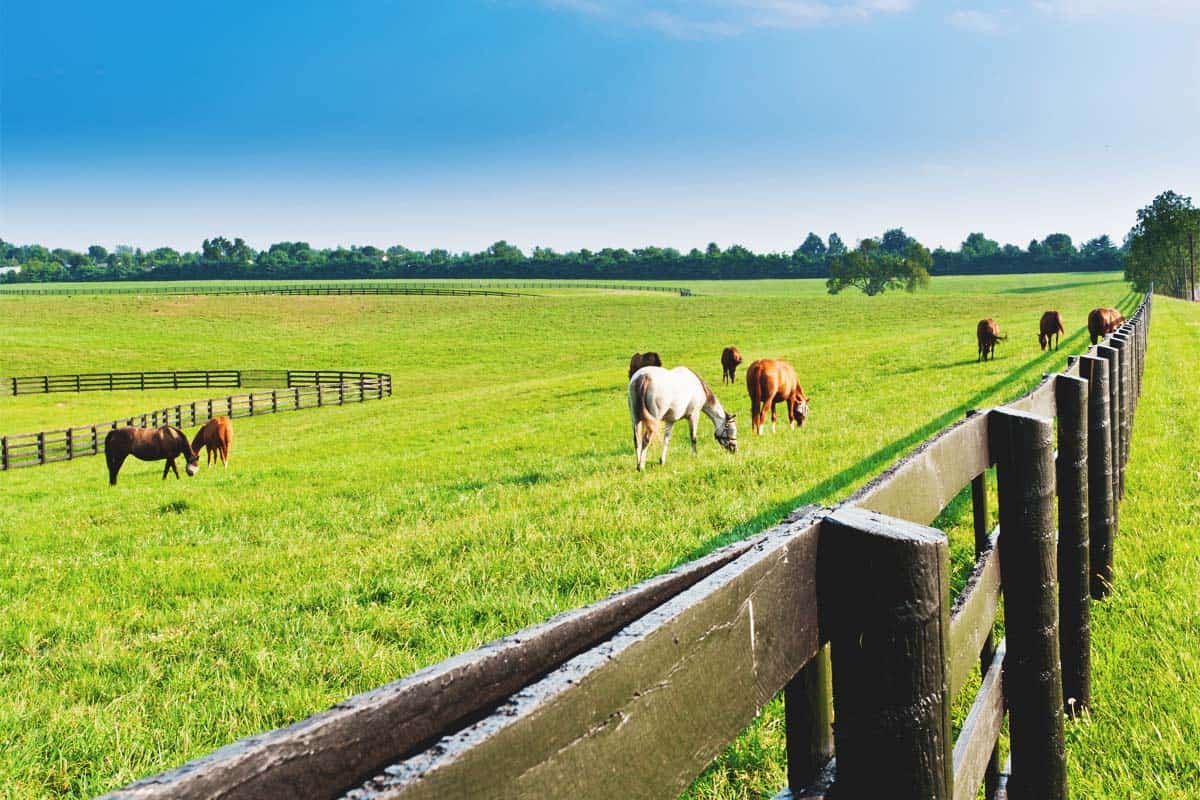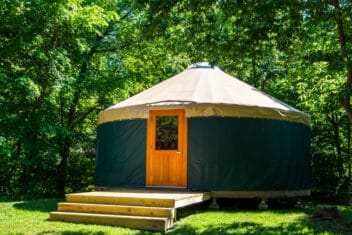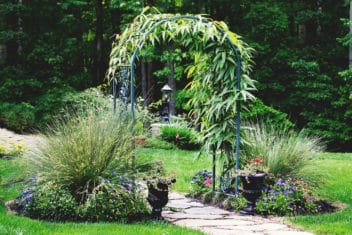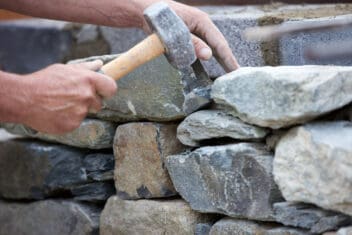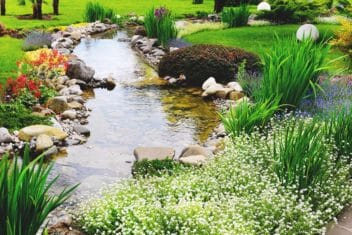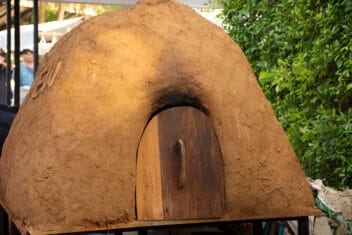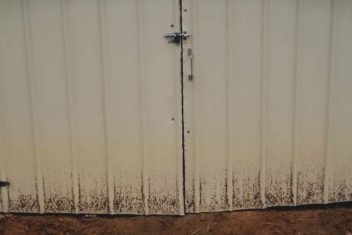If you raise livestock, you need a strong farm fence, simple as that.
Fences aren’t just important for keeping animals in – or predators out – but also because they make your homestead look neat, tidy, and contained. Yet when it comes to building a fence, it’s definitely easier said than done.
Here are some tips on building a strong fence on your farm – and one that will last for generations to come.
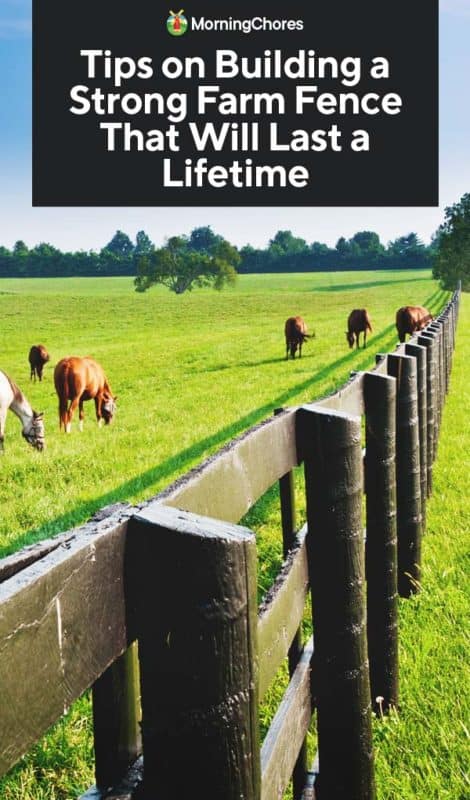
Tips for Building a Strong Fence
1. Obtain Necessary Permits
First things first, check in with the authorities in your area to find out whether you are going to need a building permit. Nine times out of ten, you won’t – but it’s worth it to check to avoid any costly fines or levies against you.
Often, a building permit is inexpensive. It’s just a matter of completing the proper paperwork. Sometimes, there may be restrictions related to the height, width, or appearance of the fence, too.
Don’t forget to call Dig Safe before you begin work so all underground utilities are marked. It pays to do your research!
2. Lay Things Out Ahead of Time
Next, you will want to measure and mark the area in which you intend to build your fence. One of the most important issues you will need to address is whether there are any easements related to the area in which you plan to build your strong farm fence.
Compare the area you intend to build on with a recent survey. Building a fence where you shouldn’t – even accidentally – can cause a lot of headaches in the future, especially if you need to sell the property at some point.
Know where your property lines are (down to the inch!) before you start any kind of fence installation or repair.
Then, mark the fence clearly and adequately with a line and stakes. Again, check this by comparing an updated survey so that you know you are contained in the boundaries of your property lines. If you haven’t had the land surveyed in quite some time, do so now.
It’s a good rule of thumb to mark approximately six inches from within the property line. This should give you plenty of room to fit the wider posts and the overall structure of your fence. If you’re putting up an electric fence, you might need as much space – but it’s best to err on the side of caution.
While you are still planning, read our article explaining a snow fence. While you are doing all this work, you might as well plan ahead for the winter and have a permanent snow fence installed to keep your driveway clear.
3. Address Slopes and Elevation
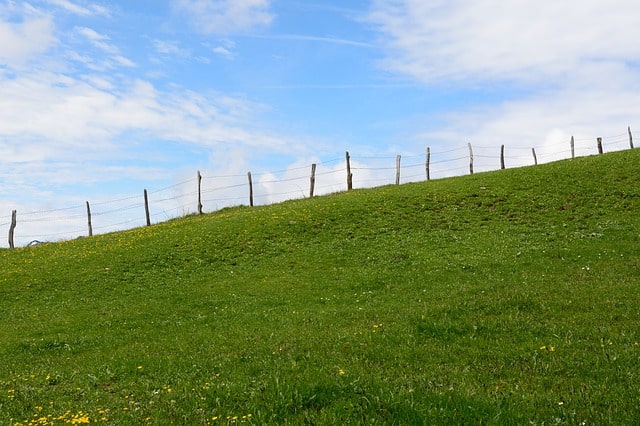
Building a strong farm fence might seem like some pretty elementary stuff, but once you start working with slopes or elevation, the math is going to get trickier. Try to account for this ahead of time.
If the slope is minor, you may not have to make many adjustments. However, for more serious elevation increases, you may need to use a fence that is stepped, in which your fence looks just like small individual steps. To do this, you will need to individually measure and cut the pieces, so mark this out ahead of time.
For some fencing materials, slope and elevation might not matter as much. But it’s important to take elevation into account, as you want to guarantee that your fence isn’t too short or tall so that animals can get over or under it.
4. Don’t Neglect Your Corner Posts and Braces

Corner braces are without a doubt the most important features of a livestock fence. These will serve as anchor points for your fence and will take the brunt of the force from both fence lines. Before you plan out any other feature of your fence, map out where you want those corner braces to go.
There are several types of braces including H braces, N braces, and braces with wood posts and wires. More often than not, a pasture fence will have two H-races back to back. One of the biggest issues, especially in soft soil, is that corner posts are not deep or thick enough. Don’t skimp on these features!
5. Decide on a Material
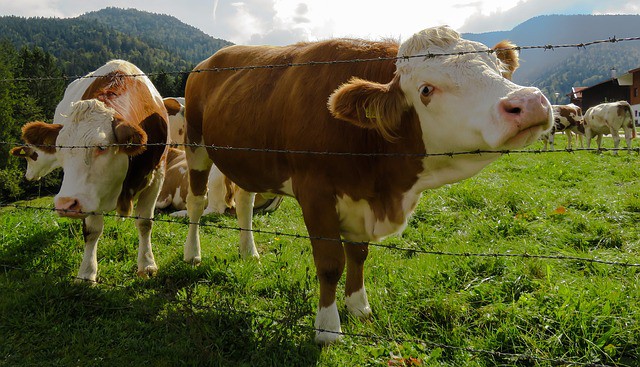
When it comes to building materials for your strong farm fence, you’ll have no shortage of options. While wood, page wire, and electric tend to be the most common building materials, some people even use unique materials like composite and vinyl (though not often, since these are more expensive).
Consider the animal you plan on housing within the fence’s boundaries before you settle on a material. While chickens can get by with a flimsy, yet tall, barrier, pigs are going to need extra reinforcements to keep them contained. For more docile animals, like sheep, you can get by with page wire – but you’re going to want it to be tall enough so that predators like coyotes are kept out.
If you plan on grazing multiple species, ensure that the fence is designed and constructed to keep the wiliest animal contained. Usually, that’s goats. Goats are known as jumpers and can easily make their way out of even a tall fence. Pigs, on the other hand, stay low to the ground but can easily root under many low fence lines. Do your research to guarantee that your fence is made out of the strongest material that your budget can afford.
6. Install Deep Fence Posts

Fence posts can consist of a variety of materials, including cedar and steel. There are advantages and disadvantages to materials of all kinds, but no matter what, ensure that you are driving those posts as deep as they can go. The deeper the posts are, the stronger your farm fence will be.
This can be a challenge in dense, rocky soils. You may need to use a pneumatic post pounder to get them into the ground. Even if it costs you a bit extra to rent one of these machines, trust me – it’s worth it. You want those posts sturdy.
Try to get the posts at least three feet deep, but four is even better. At a minimum, the posts should sit at least six inches beneath the frost line so that they don’t shuck and jive each season.
When you set your fence posts, space them far enough apart. When you are using barbed wire, you will want a post every sixteen or so feet, but in an electric fence, you really only need posts every eighty to one hundred feet. For other types of fences, though, you might need to space about twenty to thirty feet apart. Research your fence type to determine the best post spacing.
This can save you time and money!
7. Use Concrete for Stabilization
If the structural integrity of your posts has you concerned (or even if you simply want to add some extra insurance), it’s a good idea to use concrete to keep them in place. You can pour in mixed concrete or you can use a fixed form, such as a Sonotube, to save you some time.
If you’re concerned about drainage being an issue in your fence post holes, you can add some gravel in the hole, too. This will prevent water from causing frost heave and damaging your fence posts.
8. Purchase Quality Hardware
Don’t buy the cheapest screws, staples, and nails you can find when you are erecting your fence. Remember, the stronger your farm fence is, the less you’ll have to worry about animals getting out (or in). Use stainless steel or galvanized hardware, as these will be resistant to corrosion and rust.
To make the whole process easier, you can also invest in a quality post hole digger, which you can use all over the homestead afterward too, as long as you bought a quality tool.
9. Invest in a Good Gate and Hang it Right
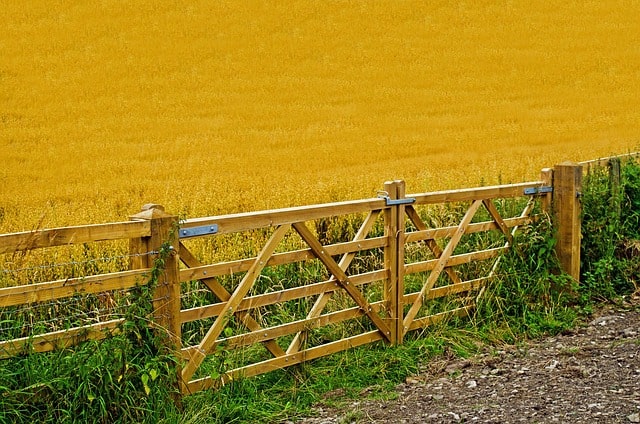
The stronger your fence posts are, the stronger your gate will be. Make sure you brace your posts while you are setting them, as this will support your gate.
You should also use three sets of hinges on your gate instead of two. Again, this will provide additional support to your gate.
When you purchase your gate, again, consider your type of livestock. You also need to consider your operation size (how many animals you have) and your infrastructure. A larger gate is necessary to accommodate large machinery, like tractors, as it will be necessary for large animals (like cattle).
10. Measure Twice and Cut Once

Try to be as specific and accurate as possible with your measurements. A good saying to live by when you’re building a strong farm fence – or really any structure on your farm – is to measure twice and cut once. This way, you’ll be sure you aren’t making any mistakes or miscalculations.
It sounds obvious, but you need to make sure your fence posts are plumb and that the fence is level across the top. It should also be in a straight line! Not only will a wonky fence look strange, but it’s not going to be as structurally sound, either.
11. Keep An Eye On Your Animals
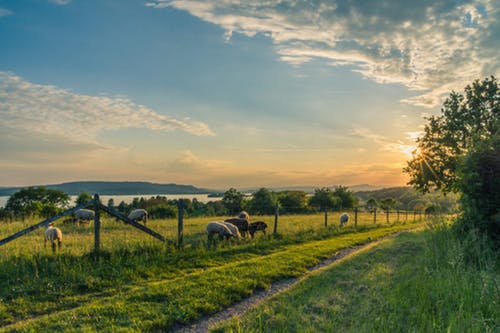
Once you let the animals loose in the new pasture for the first time, don’t think your work is done. You should keep an eye on them for at least an hour to make sure they are adapting well and also that your fence is passing muster.
Your animals will be the best detectors of any holes or gaps in the fence, so let them show you if you have made any mistakes!
Why a Sturdy, Secure Fence Matters
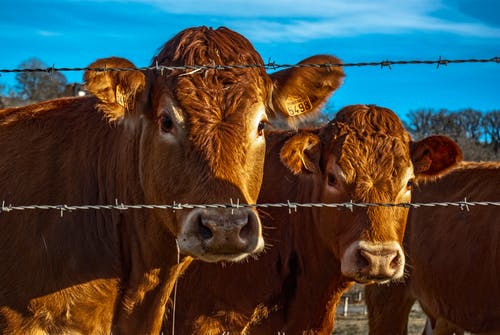
A good fence will not only keep your livestock contained, but it will also keep predators out. Whether you’re grazing hundreds of cattle or just a few pigs, knowing the ins and outs of this kind of project is vital to a successful farming operation.
Not only can a strong farm fence add visual appeal and resale value to your farm, but it can also serve as a nice divider. You will be able to mark out specific sections of your property so that it’s easy to manage your animals and your land.
While building a strong farm fence for the first time can certainly be a daunting task, it’s something that you will become quite skilled at over time. My own farm is living proof. Although the first fences that we built on our farm are quite humbling to behold, our most recent projects are picture-perfect and have done a great job at keeping all of our livestock contained.
Practice makes perfect, and that’s especially true on the farm!
